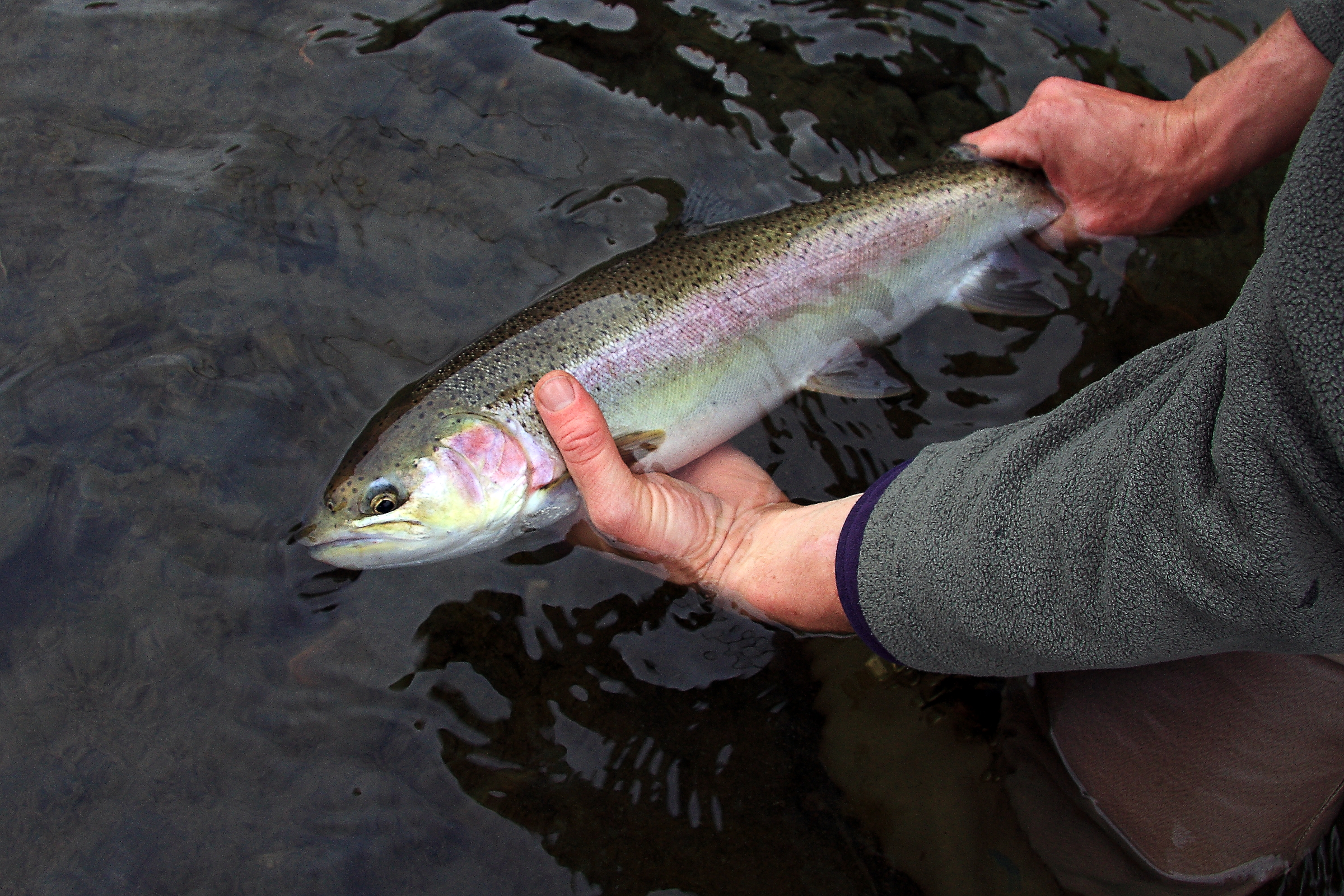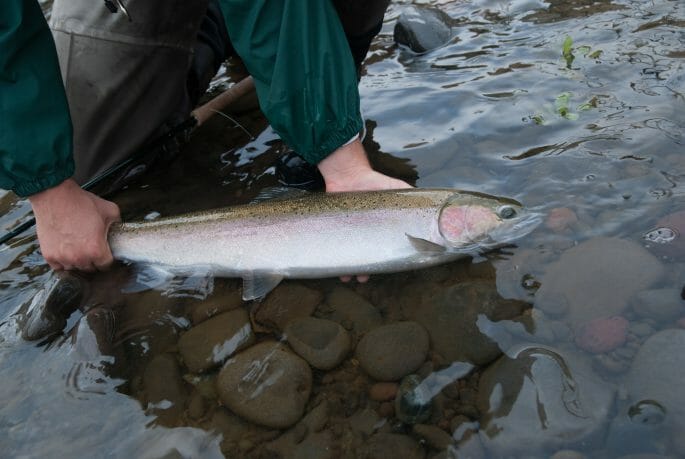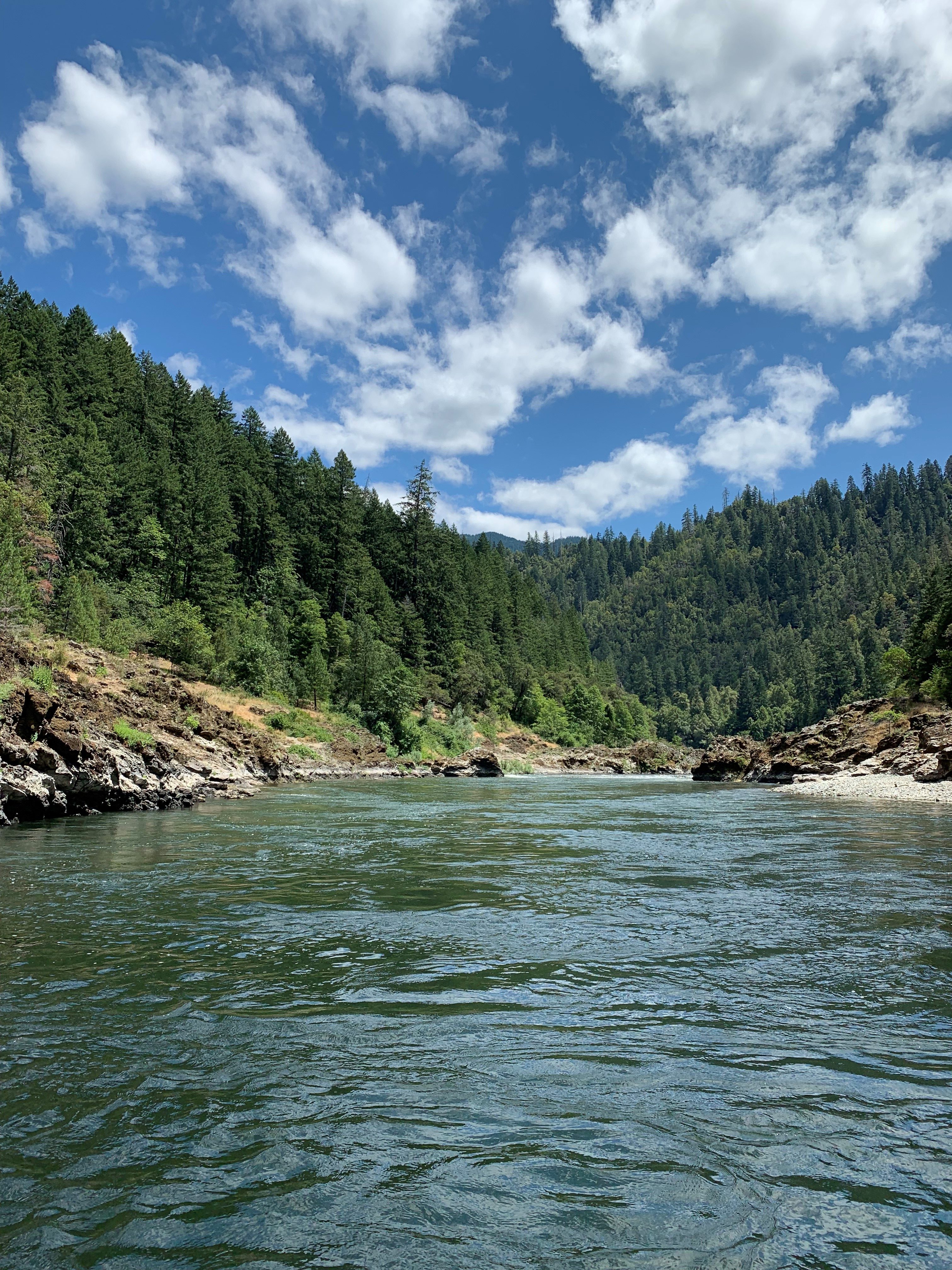We love all steelhead here at Wild Steelheaders United and Trout Unlimited, but some anadromous O. mykiss populations may deserve more love than others.
Consider wild summer run steelhead in Northern California. The available data for wild summers between Redwood Creek and the Gualala River (including the legendary Eel River watershed) suggest their numbers are greatly depleted — probably enough to warrant additional protections under state or federal endangered species statutes.
Based on a recent decision by the California Fish and Game Commission, Northern California summer steelhead could receive this kind of status by 2020. The Commission recently reviewed a petition to list Northern California summer runs as endangered under the California Endangered Species Act (CESA), and voted unanimously to direct the California Department of Fish and Wildlife to conduct a formal species status review over the next year.
Northern California coastal steelhead are already listed as threatened under the federal Endangered Species Act. Threatened status means the population has been determined to be at risk of falling below a naturally-sustainable level; endangered means it is likely to go extinct without significant intervention.
Wild summer run steelhead in northern California are now so few that they may deserve the more drastic status designation.
The Commission’s ultimate decision on this petition will depend on CDFW’s findings and recommendation — and could have implications for how we conserve and manage steelhead up and down the West Coast.
Why? Because summer and winter run steelhead have, until now, been considered capable of producing fish of either run; resource agencies have therefore managed them that way and have listed “distinct population segments” (DPSs) or “ecologically significant units” (ESUs) only if they were depleted as a whole (not broken out by run timing).
Most steelhead aficionados know that steelhead are delineated into two categories — summer runs and winter runs — based on the time of year they enter freshwater and their state of maturity when they do. However, recent research from Mike Miller’s lab at the University of California at Davis has revealed an important genetic difference between the two races (read this post for more info), suggesting that summer returning fish evolved long ago to take advantage of different run timing and freshwater habitats in summer and fall, and, more importantly, that this genetic difference cannot simply be flipped on and off. In other words, progeny of fall and winter returning steelhead can’t become summer run fish, and vice versa.
The Miller et al findings cast a different light on how we think about recovering a species, especially those with multiple races – like summer and winter steelhead and spring/summer and fall Chinook.
The long-held scientific belief that one run of steelhead could give rise to another — and that if winter runs were sufficiently abundant that could keep summer runs off the Endangered Species list — was based on the presumption that differences in life histories were due to lots of genes working in combination with one another, and that if issues constraining summer runs were solved (such as improving migration survival or reducing summer temperatures) winter runs would have enough diversity to breed with and/or produce some summer run life histories and contribute to rebuilding a summer run.

However, the latest research suggests this may not be the case with steelhead and chinook. In fact, the differences in races may largely be due to a single gene, which means that it may be very difficult and rare for one race to give rise to another. Given this, it is highly unlikely that winter run populations, regardless of how robust they are, would give rise to enough summer runs over the next few tens of thousands of years to keep the summer runs viable.
There is some debate in the scientific community over how to incorporate the new genetic information into the accepted body of data and analysis, and, not surprisingly, it has raised questions about the current policy of listing races as a whole rather than separately. The decision that California makes on the petition to list northern California coastal summer run steelhead as endangered will provide some insight into how scientists and policy-makers more broadly may use the new genetic information.
A listing under the California ESA would essentially forge a new framework for conserving and managing steelhead at the state level. It would also affirm the value of the new science. Whether Federal policy and listing considerations and reviews adopt a similar approach will be interesting to watch.
Regardless of whether the petition to list northern California coastal summer run steelhead as endangered under CESA is successful, we must do all we can to protect summer run steelhead, the biggest and baddest of all steelhead, everywhere — especially now that we suspect summer runs are virtually a unique species of O. mykiss.
We know what it will take to keep this race viable range-wide: continued restoration of habitat and fish passage; more enlightened water use and dam management; adjustments in policy and regulations as needed. It also takes will power — and that’s where anglers can really help.



